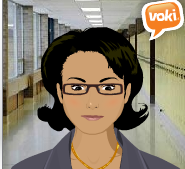This blog will attempt to provide an understanding of the ever changing policy & school finance structures impacting online learning initiatives in suburban New York school districts as well as describe how students, parents and school districts are beginning to supplement the traditional school curricula with online course options (beyond and during the school day).
A focus is on issues specific to suburban school districts which may not have the same access to online courses more readily available to rural districts.
With your input, perhaps we can answer some of the following questions over the next twelve months:
1. Should New York State require students to participate in online learning?
2. Should individual school districts lead the way and make decisions about whether to implement online learning?
3. To what extent are parents seeking out online courses for their children to participate in, beyond the school day (from private, non-profit or university providers)?
3a. Should school districts be able to award credit for online courses that the student takes outside of school?
4. How does the advent of pandemic viruses influence parent, teacher, student, leadership, community member, and other interested professionals' interest in online learning?
5. When, if ever, are online course options "better" than "face-to-face" courses for K-12 students?
6. What are some policy recommendations for New York State Department of Education?
7. Should school finance and student funding formulas be changed to allow online learning system wide?
8. What types of online learning models would be appropriate for New York public schools?
9. What is the prevalence of online learning course options in suburban schools on Long Island?
10. What are the characteristics of school districts that have successfully implemented online courses? Which models are more likely to be implemented in districts with similar characteristics?
We will examine a variety of online learning models used by traditional school districts in rural, urban and suburban settings throughout the US and internationally. Here are some examples of online learning models that have been implemented in traditional school settings:
a. VOISE, Chicago (Students attend a traditional school setting; curriculum is provided online with content from a variety of vendors; teacher is present in the classroom--Some New York City schools are beginning to use a model similar to this one where students attend school 5 days a week but participate in online courses from their classroom, also gaining momentum in "transfer schools")
b. SEED Academy, Hawaii (STEM: Hybrid model, students attend school 2 or 3 x weekly and take online courses off-site the other days of the week)
c. VIRTUAL HIGH SCHOOL (Unique model in which VHS, a non-profit organization, works with school districts to make special courses available
FutureMakers Update, 3 May, 2024
-
An item for my Kiwi readers as they begin their week. FutureMakers
Newsletter 3 May 2024 Kia ora koutou I’ve spent part of this week in
conversations with ...
5 hours ago
